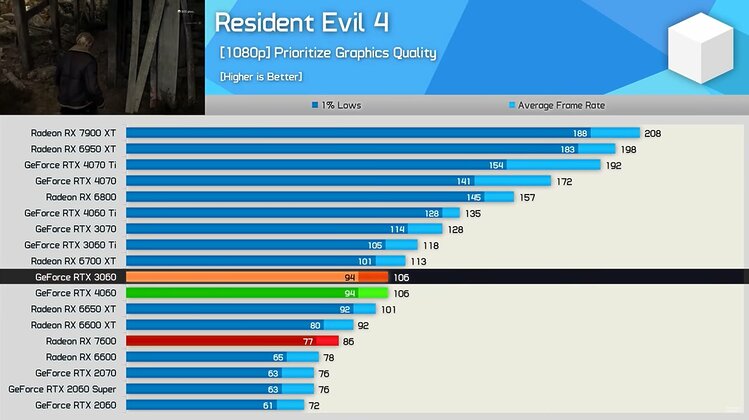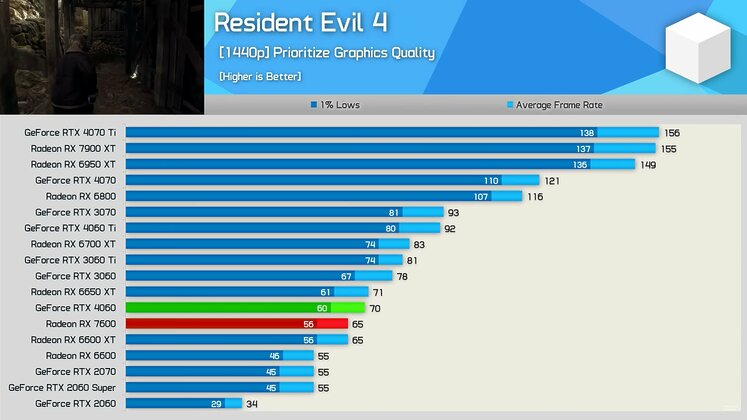- The RTX 4060 provides minor improvements over the last generation’s RTX 4060 and 4060 Ti.
- Lower Bandwidth combined with the 8GB VRAM makes it a less ideal deal compared to past 60-class offerings.
- The card offers lackluster Rasterization performance, with AMD’s last-gen RX 6700 XT proving to be a better overall deal when it comes to price-to-performance.
I’ve always been a fan of Nvidia’s 60-class GPUs due to their fantastic price to performance. What’s more, I’m not the only one who has this opinion since the GTX 1060 (Later replaced by the 3060) topped the Steam hardware survey charts for an incredibly long time.
So, I expected to see something similar when it came down to the 4060. Unfortunately, the 4060 failed to deliver in overall price-to-performance, falling behind everyone’s expectations. So, what made it such a disappointing release?
Minor Improvements Over Last Gen
With a price tag of $300, I expected its performance to at least topple the RTX 3060 Ti. Well, the RTX 4060 didn’t quite manage that, failing to match or even come close to it in most titles. What’s more, its gains over the 3060 weren’t impressive either.
In Hardware Unboxed’s review of the card, we can see the RTX 4060 matching the previous generation 3060 in some games like Resident Evil 4 Remake. While that wasn’t always the case in every title tested, I find it ridiculous to see a new card matching its older-generation counterpart.
Things take a turn for the worse when taking a look at the 1440p results. Here, the RTX 4060 falls manages to fall behind even the 3060, mostly due to the limited memory capacity.
Memory Concerns
With 8GB of VRAM, a 128-bit memory bus width, and a memory bandwidth of 272 GB/s, the RTX 4060’s memory specifications sit a notch below the RTX 3060 and the 3060 Ti. This reduction in specifications results in worse performance in memory-intensive games, which isn’t ideal coming from a generational upgrade.
8GB of VRAM Is Not Enough
One would think that 12GB of VRAM would become the norm for mid-range GPUs, especially considering the VRAM-intensive nature of modern triple-A titles such as Hogwarts Legacy and Last Of Us Part 1. Nvidia seems to have completely disregarded that, deciding to go with 8GB of VRAM for the RTX 4060, which is a choice I still can’t get behind.
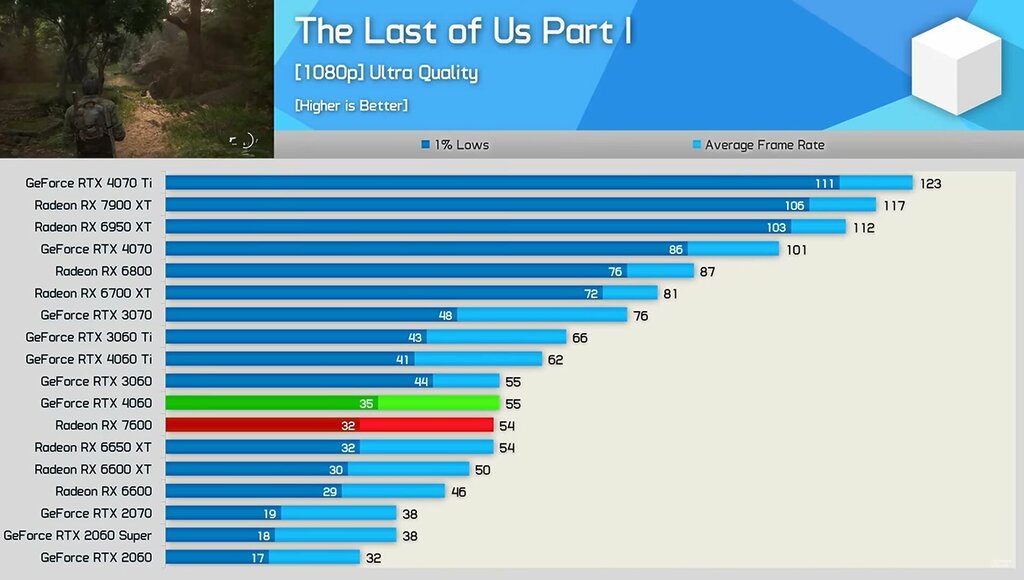
You see, the requirement for more memory in games is no longer limited to higher resolutions, with modern titles now demanding a higher VRAM capacity even at 1080p. This became more obvious when looking at Last Of Us Part 1, where the RTX 4060 got outpaced by the three-year-old 3060 in terms of one-percent lows.
The Lower Bandwidth Is A Problem
Memory capacity aside, Nvidia also decided to heavily reduce the memory bandwidth on the RTX 4060, resulting in a further degraded experience. Unfortunately, Nvidia’s strategy of cranking up the L2 Cache while cutting down on the rest of the specifications didn’t quite work out, and that shows in the performance benchmarks.
There Are Better Deals
During the 4060’s release, I was able to find much better deals on GPUs, such as the RX 6700 XT, which retailed for around the same price. Granted, you would miss out on better RT performance and DLSS, but the raw rasterization performance combined with the higher VRAM capacity made it a much better buy.
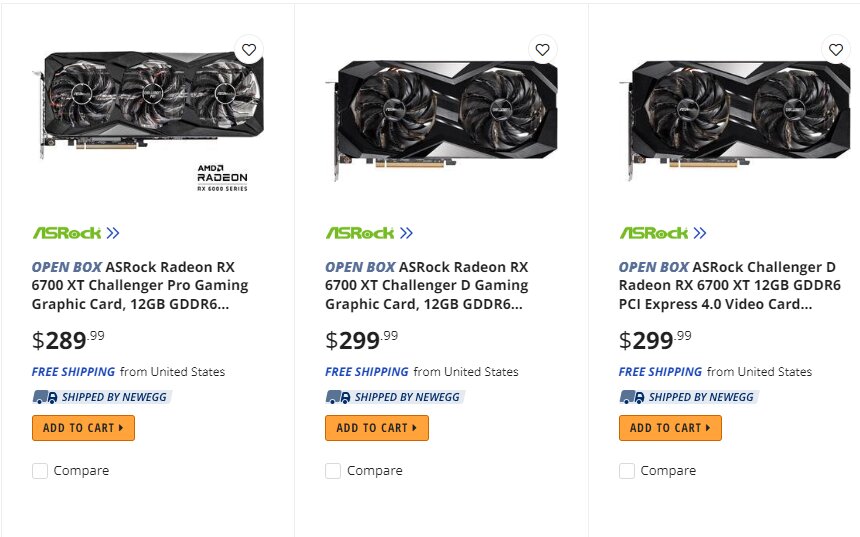
Other cards, such as the RX 6600 XT, also provided better value at that time and continue to do so. The better price-to-performance on some of these AMD cards made it hard to justify the $300 price tag of the 4060, especially when looking at its performance figures.
Overreliance On AI Upscaling
There seems to be a huge focus on AI with every iteration of Nvidia’s graphics cards, and the 4000 series was no different. Don’t get me wrong, features such as frame generation and DLSS can be great for improving the longevity of modern hardware, but I get the feeling Nvidia has been over-relying on both of those features on their lower-end cards.
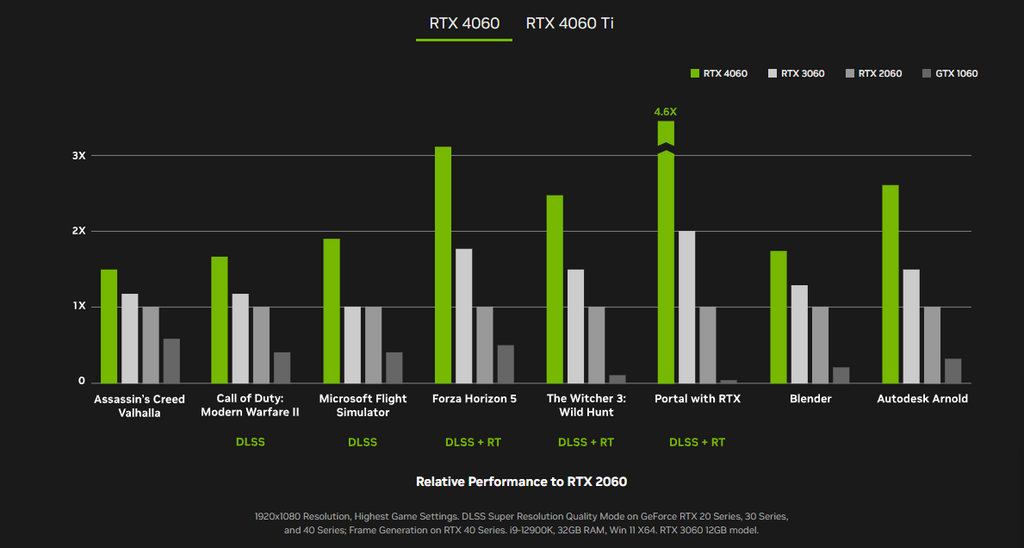
Nvidia themselves showcased the card’s performance with DLSS and Frame Generation enabled on their official website, which essentially confirms my suspicions.
Final Thoughts
If I had to describe the RTX 4060 in one word, it would be “underwhelming”. Not only was it unable to perform much better than the 3-year-old RTX 3060, but competition from AMD’s older GPUs, such as RX 6700 XT, made it a hard sell. In my opinion, a lower launch price of around $220-250 would have made more sense.
Thank you! Please share your positive feedback. 🔋
How could we improve this post? Please Help us. 😔
[Editor-in-Chief]
Sajjad Hussain is the Founder and Editor-in-Chief of Tech4Gamers.com. Apart from the Tech and Gaming scene, Sajjad is a Seasonal banker who has delivered multi-million dollar projects as an IT Project Manager and works as a freelancer to provide professional services to corporate giants and emerging startups in the IT space.
Majored in Computer Science
13+ years of Experience as a PC Hardware Reviewer.
8+ years of Experience as an IT Project Manager in the Corporate Sector.
Certified in Google IT Support Specialization.
Admin of PPG, the largest local Community of gamers with 130k+ members.
Sajjad is a passionate and knowledgeable individual with many skills and experience in the tech industry and the gaming community. He is committed to providing honest, in-depth product reviews and analysis and building and maintaining a strong gaming community.


 Threads
Threads